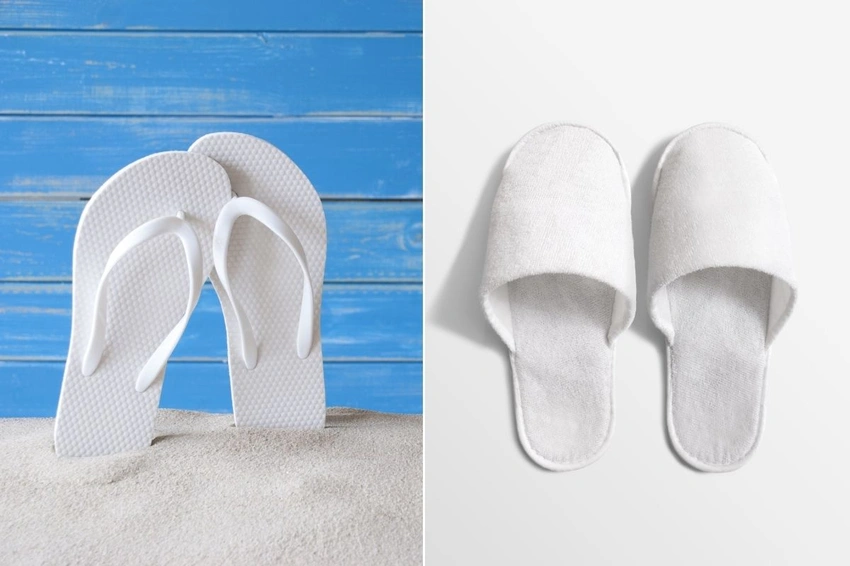 Did you know that the type of casual footwear you choose can impact your foot health if you have diabetes? Flip-flops and sliders may seem convenient, but not all of them provide the necessary support. Understanding their differences can help diabetics make safer, more comfortable choices to prevent foot complications.
Did you know that the type of casual footwear you choose can impact your foot health if you have diabetes? Flip-flops and sliders may seem convenient, but not all of them provide the necessary support. Understanding their differences can help diabetics make safer, more comfortable choices to prevent foot complications.

Flip-Flops: A Risky Choice
Flip-flops are often discouraged for diabetics due to their minimal support and protection. They offer little cushioning, leading to increased pressure on the feet, which can cause blisters, calluses, or ulcers. Additionally, the open design exposes feet to potential injuries.
As noted by Dr. Miguel Cunha, a board-certified foot surgeon:
Closed shoes offer superior support and protection from environmental hazards, such as gravel and stones, that can enter sandals and cause cuts and wounds that may become infected.

Sliders: A Safer Alternative?
Sliders, with their open-toe design, still pose risks similar to flip-flops. However, if they include features like adjustable straps, cushioned insoles, and arch support, they can be a more viable option for short-term use. Sliders must fit well to prevent friction and potential sores. Nonetheless, they should not replace well-fitted, closed-toe shoes designed for diabetics.
Expert Recommendations
Healthcare professionals emphasize the importance of proper footwear for diabetics. Dr. V. Mohan, founder of Dr. Mohan’s Diabetes Specialities Centre, advises that shoes should be broad, especially in the front, to prevent rubbing that can cause blisters and calluses. He also recommends avoiding narrow or pointed shoes.

Pro Tips for Selecting Diabetic Footwear
- Prioritize Proper Fit: Ensure shoes fit well without being too tight or loose. Ill-fitting shoes can cause blisters, calluses, and ulcers. It's advisable to shop for shoes later in the day when feet are slightly swollen to get the most accurate fit.
- Opt for Shoes with a Wide Toe Box: A spacious toe box prevents crowding and allows for natural toe movement, reducing the risk of pressure sores and deformities.
- Choose Shoes with Adjustable Features: Shoes with laces or Velcro straps allow for adjustments to accommodate foot swelling and ensure a secure fit.
- Select Breathable Materials: Shoes made from breathable materials like full-grain leather help keep feet dry and reduce the risk of fungal infections.
- Incorporate Supportive Insoles: Consider using custom orthotic insoles to provide additional support and distribute pressure evenly across the foot.
- Regularly Inspect and Replace Footwear: Regularly check your shoes for signs of wear and tear, and replace them as needed to ensure continuous support and protection.

Thinking back to my father’s journey with diabetes, I remember how he used to wear flip-flops because they were easy and comfortable. But over time, he started getting painful foot sores—something we hadn’t expected. His doctor explained that those casual shoes weren’t giving his feet the support they needed. That’s when he switched to orthopedic shoes made for diabetics, and the difference was amazing. His foot health improved, and the discomfort faded. While sliders might be a bit better than flip-flops, neither truly protects diabetic feet. It’s worth investing in proper, closed-toe shoes that are designed with foot care in mind. Good footwear really does make a big difference.
#DiabetesAwareness #FootHealth #HealthyLiving #DiabeticCare #FootwearSafety














i prefer buying bata orthopedic range, they may not seem stylish , but are the most comfy